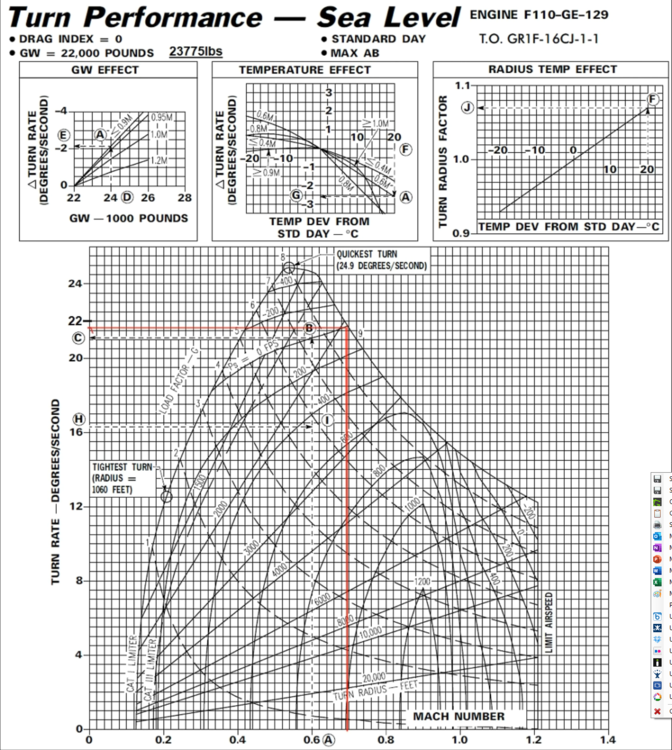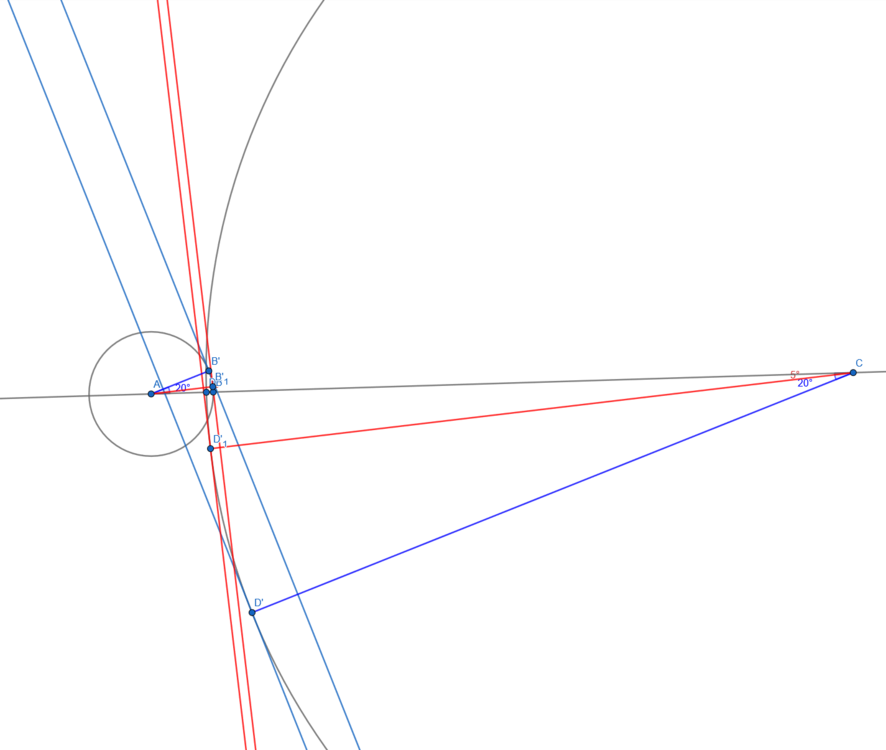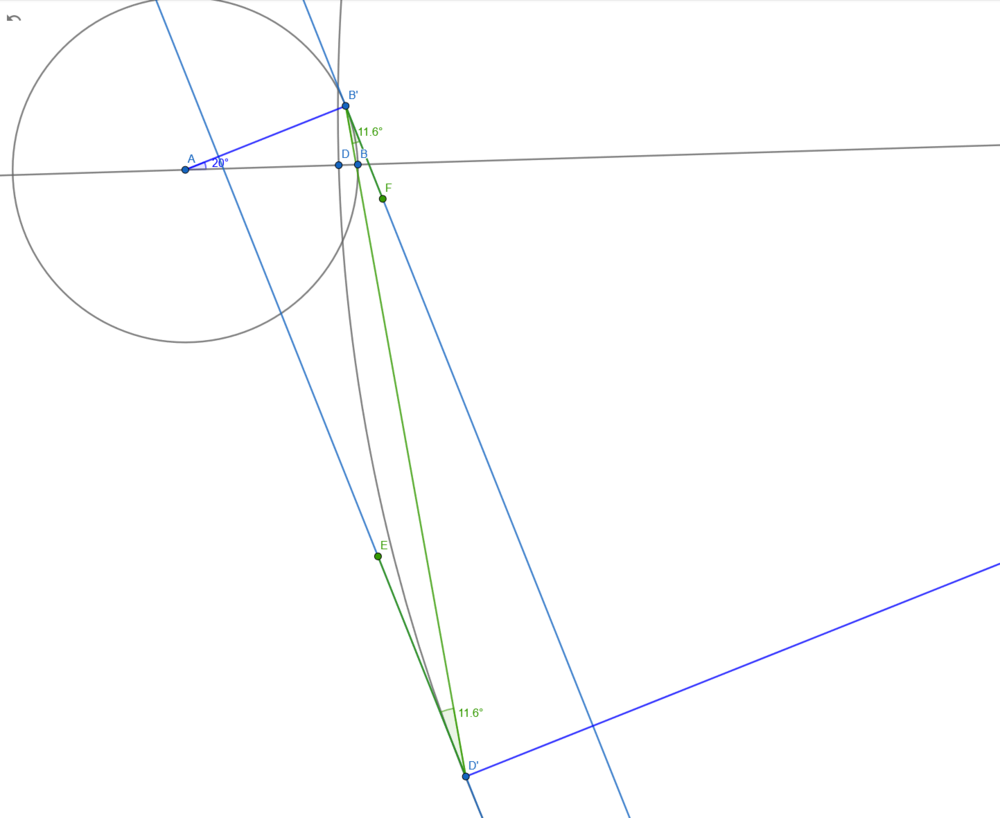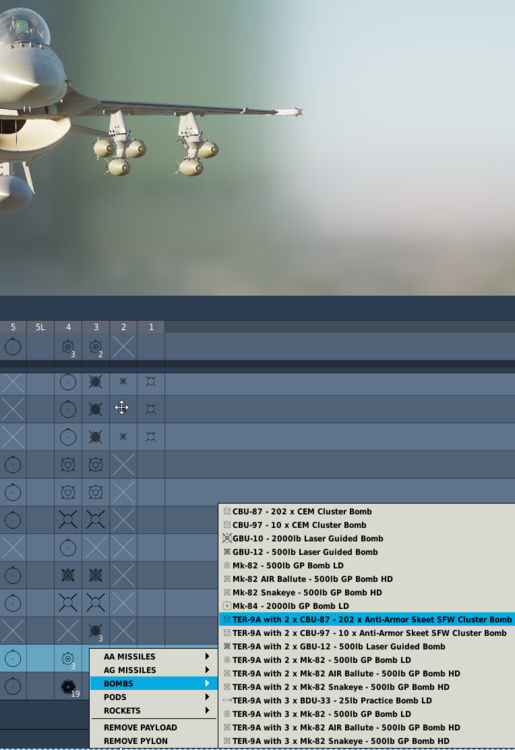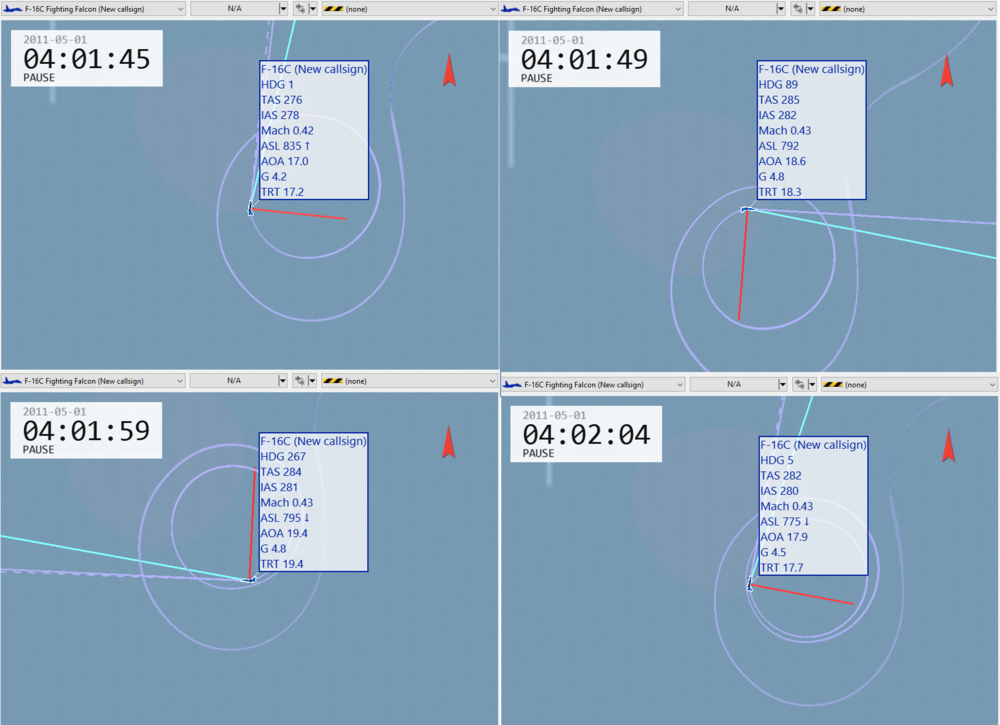

Xavven
Members-
Posts
472 -
Joined
-
Last visited
-
Days Won
1
Content Type
Profiles
Forums
Events
Everything posted by Xavven
-
So let me help you understand what you're seeing. The different graphs are for different fuel and payloads. I recommend looking at the 50% fuel graph with pylons removed and compare that to the hornet with 50% fuel and the pylons removed. This link will show those configurations automatically for you https://dcs.silver.ru/66,67 If you don't know, weight will impact your turn rate significantly, so the reason you're seeing turn rates "all over the place" is because their fuel levels, and thus weight, are different. Drag index also affects your turn rate. So if you have empty pylons on your F-16, it'll turn slower than if it had the pylons completely removed (plus the pylons are weight too). In fact, if you reduce the fuel level of the F-16 and increase the fuel level of the F-18, the graph shows that the F-16 will indeed outrate the F-18. But that is not what we're trying to compare. Obvious a weighed down plane should turn worse than a lightened one. Let's compare them when they are at similar fuel levels, right? You are correct that the time to turn is getting lower and lower. I'll clarify that it gets lower as IAS increases. The graph lets you compare the time to turn for the most common speeds the Viper and Hornet operate in. I recommend clicking on the Turn Speed button there at the top of the graph so you can see it in deg/sec instead of seconds to turn 360°. As you can see if you put the Hornet up on the graph, it has a faster turn rate at all speeds. And if you click on the Turn Radius button, you see the F-18 has a tighter turn radius too. If I'm not mistaken, this means the Hornet can pull more G without losing airspeed than the F-16 can in any equivalent flight regime. As for how they compare to real life values, karasawa has been posting that answer. I recommend you read this page a bit more closely! But if you want, here is an F-16 EM chart that Wags himself provided the Grim Reapers, and it's reasonable to assume ED is using this chart to tune the F-16's flight model. : If you compare the best STR here on the chart, it's saying it should be over 21.5 deg/sec. If you look at https://dcs.silver.ru/66-1595 and set fuel to 49% so that the weight in kg is 10754 (which is close to 23775 lbs) it says our DCS viper is performing at 17.31 deg/sec at 346 knots IAS, which is close to the 0.7 mach on the EM chart. Unfortunately, the site's chart is at an altitude of "1000". No units. I would have to guess that is in meters, since everything else has defaulted to metric. So yeah, about 3000 feet. That's not sea level... but I'm not thinking I should see a 4.2 deg/sec drop in turn rate in that amount of altitude! (edit: please excuse my errors. I should have set weight to 22000 lbs, not 23775, and used mach 0.7, not 0.5. I discuss a correction in a later post on this thread)
-
ok. I just edited the link so it compares the F-16 and the F-18, instead of just showing the former.
-
Have you looked at https://dcs.silver.ru/66,67 and what do you think of it? You keep asking for numbers and they're right there.
-
Wow, so I looked at https://dcs.silver.ru/66-831 and what struck me as particularly amazing is the way he's gathering data. There's a link on his site that shows an example: I think he's using a mod to do the flying so that he can hit exact turn parameters better than any human can. This improves my confidence in the data posted on the site. Hell, if I knew this existed it would have saved me a ton of time a few weeks ago when I was comparing the DCS F-16 sustained turn rate performance to some EM charts we found on the internet. Trying my darnedest to hold a perfect turn but it's hard to do that. To me, this is a pretty scientific way of testing turn performance. Currently the DCS F-18 has both a faster sustained turn rate and a smaller turn radius at all speeds according to this. I'd be curious, if anyone still doubts this, what is your reasoning? Is there something about this study that you think is invalid?
-
I don't think you are going to convince a bunch of flight sim enthusiasts to not nitpick the flight model. I think you're saying that the F-16 is competitive and you offered a dogfight video to show that it is. Well, I have to agree that the F-16 is competitive and its performance is pretty close to the F-18. When the matchup is that close, you're right, skill is more often the determining factor in who is going to win in guns only 1 vs 1. If the aircraft were more dissimilar, maybe the on-paper stats would be more important. It's fine to frame a question that way and answer it with your own observations which are perfectly valid. There's another question to answer, however, and it's related to the title of this thread: did DCS model the F-18 and F-16 turn rates correctly to real life? In pursuing this question, I can't really accept a dogfight as evidence to prove the case one way or another. I'd have to isolate all the variables, for example holding a level turn, not varying G or airspeed, and have an accurate stopwatch. Repeat at different altitudes, speeds, and G, take multiple samples, and do the statistical analysis. There are too many other variables going on in a dogfight to clearly conclude whether ONE aspect of an aircraft, specifically turn rate, is performing accurately to real life. There could be a skill difference, someone could have made a BFM error, one person may have dumped all his F-18's energy to try to force a 1-circle radius fight at slow speed and thus made it easier for the F-16 to outrate it because the F-16 maintained its energy instead, you have TWR differences that dictate which aircraft can recover to its best turn rate speed again after dumping energy, you have people exchanging altitude for speed and back, you have jinking, you have negative Ps usage to gain angles using high ITR, you have dumping the nose to regain airspeed, etc. TLDR: posters here are attempting to answer different questions, and the evidence that helps answer one question doesn't actually translate to answering the other.
-
It would appear @totmacher has those numbers for you on page 12 of this thread.
-
I'm not sure this actually helps your case, Hammer1-1. Did you listen to his commentary at the 9:40 mark? https://youtu.be/xcqYmFLL6lE?t=580 He says that in full disclosure, the F-18 outrates the F-16 in DCS and that it shouldn't be that way.
-
I had actual text there but when I hit submit, the forum deleted all the text explaining this. I edited the post. Reread it above. Sorry about that!
-
You know, at first I thought that under those conditions, the plane with a smaller turn radius would get nose on first. I even made a stupid, inaccurate diagram in Word to prove it. But I was wrong. I found a geometry sketching website at https://www.geogebra.org/geometry?lang=en and it measures angles, creates perpendicular lines, etc. and you're right... both aircraft will get nose on at exactly the same time. Here's a sketch I made with extremely exaggerated different radii, and their status after going around their circle 340° (blue lines) and 355° (red lines) In reality, the planes would need to pull some AoA and wouldn't have their noses pointing tangent to their turn circle. Does that change the outcome? Answer: No. Screenshot below shows that both planes only have to pull 11.6° (green angle measured by the geometry application)
-
Oh wow, this was it 100%. The weapons training mission I made was set at 7 AM in the summer and it locked at around the 2 mile mark. I switched it to noon and it locks at 6 miles now. Thank you! So yeah, I'm going to go with "not modeled correctly". I'd understand it having poor contrast at twilight hours, but flying around at 7 AM in my mission the sun is like 20° above the horizon and everything is well lit, just with somewhat long shadows, and I'm trying to lock with the sun at my back, so....
-
I seem to remember getting decent lock ranges on the AGM-65H in the A-10C, like 5 miles or something. In the Viper I'm lucky to get a lock at 3 miles. The AGM-65D on the other hand locks from an even better distance, like 7 or even 8 if I'm using the TGP. Is this modeled correctly, first off, and if so, is there any particular reason anyone would want to use the H instead of the D? Is the D too washed out in, say, a hot desert environment?
-
That's a really good summary. Thanks! I feel like EOM and PB modes were significant for me personally. HAS and RUK weren't sufficient for going up against big SAM sites. But maybe that would be considered a small change and HTS would be big. The top things I'm anticipating are flight model tweaks, a proper SPI system and ground target designation with JHMCS.
-
Screenshot below shows that when selecting bombs, the single CBU-87 and CBU-97 are both labeled as "CEM Cluster Bomb" while both the TER-9A with 2x CBU-87 and TER-9A with 2x CBU-97 are labeled as "Anti-Armor Skeet SFW Cluster Bomb" I believe the CBU-87 is the CEM and the CBU-97 is the SFW regardless of whether it is mounted on a TER-9A. Correct? Conditions: Single player mission, Caucuses, USA F-16 bl. 50 with as task of CAS and set to Player
-
I think the F-15 is a little faster, but the Viper's bubble canopy gives a greater sense of speed at treetop level.
-
I agree with all of that, excepting coming from the A-10C, the Viper's payload capacity is really really light And I think the Hornet carries more ordnance if I'm not mistaken. ED occasionally has free demo days/weekends/weeks. It could be a good time to try out the Viper and see if you like it. Personally I feel that it's worth picking up if you love the jet. I think the Hornet has more utility right now, but I just like the Viper better for personal, non-utilitarian reasons.
-
Gunning them down would be an act of war. In this particular confrontation between Greek and Turkish F-16s, they didn't actually fire, thankfully. I'm just speculating here, but getting to their control zone and having a weapons solution is analogous to putting someone in an arm lock and escorting them off the premises. Greek F-16s came into airspace that Turkey declared was theirs for a naval exercise. The intercept was a stern warning to stop doing what you're doing and leave the area. What better way to do that than demonstrate you have a firing solution and they do not?
-
Oh, I heard the point of your posts loud and clear. You've made quite a few boasts along with your points, actually. It will be good to see you back them up with results in the next tournament.
-
Gotta love the big talk. "You're lucky I don't have DCS installed right now or I'd totally kick your butt in a guns-only tournament."
-

in progress So, no flight model update for the F-16 in the 2.7 patch?
Xavven replied to SCPanda's topic in DCS: F-16C Viper
I think it's valid to check the DI = 50 charts as long as the configuration is matched. A lot of people run their own tests but don't set conditions to standard day, don't match fuel and weight, and don't match DI and altitude. We're also not robots and it's kinda hard to fly a turn at a specified G, speed, AND altitude long enough, so there are inevitably errors. And then there's the issue/question of using Tacview's or ctrl-Y turn rates, or if you have to convert that to horizontal turn component only by calculating it yourself as oldtimesake does (seems plausible but I had never heard that before) or whether you should fly a circle and time it yourself to get turn rate. There are just a lot of factors that contribute to error. So being 1 deg./sec. off... well we don't know if it's exactly that much off, and it's certainly not out of the ballpark. I think ED's doing its best with the resources it has. Customers are just pissy sometimes, myself included sometimes, just not today. -

in progress So, no flight model update for the F-16 in the 2.7 patch?
Xavven replied to SCPanda's topic in DCS: F-16C Viper
Gotta agree. My own tests in DCS against whatever EM charts I can get my hands on as a plain old civilian confirm ED has the F-16 at least in the right ballpark. Sure, there's some suspicion it bleeds energy a tad too much in certain turn profiles, but it's close in my personal opinion. For people who like guns-only dogfight PVP servers and fly against the F-18 a lot, the inaccuracies in the F-16 flight model probably stick out more. Even 1 deg./sec. of rate, or 100 feet of turn circle radius can make or break a fight in DACT. I also think some people are upset at the pace of the F-16's development. They're paying customers after all, and complaining is to be expected. Personally, I find life more fun when I don't get bent out of shape over things that don't matter all that much, like video games. If the flight model is ruining your day, could I suggest playing with the new toys we got with 2.7, like the new HARM modes? -
I just ran the DEAD instant action missions made for the Nevada map and it was pretty fun! Switching between HAS mode for some sites and lofting HARMS from miles away in PB mode was pretty effective. I imagine doing this with a HTS is going to be even better. Thanks, ED!
-

If you want 2 circle in a F-16, stay above 10000 feet.
Xavven replied to oldtimesake's topic in DCS: F-16C Viper
Yeah, good point, it's at least 19 seconds. Being even a half second more changes the rate significantly. I'm willing to say my test shows 1 deg./sec. too slow compared to the chart, or 100 FPS too low on specific excess power. Somewhere in that ballpark. -

If you want 2 circle in a F-16, stay above 10000 feet.
Xavven replied to oldtimesake's topic in DCS: F-16C Viper
I think I averaged more like 18.9 deg./sec., but even with my imperfect flying (my G varied a bit in the turn and I dropped 60 ft of altitude and gained 6 knots of speed over 19 seconds) I don't think I varied enough to materially change the results. 360 deg / 19 sec = 18.94 deg./sec. Although, that should put me closer to Ps = +100 than the Ps = 0 line. I should have gained 1900 ft of altitude over that whole turn. That's only if Tacview's speed is to be trusted, though. Like I said, my HUD indicated IAS of more like 270 knots in that turn, not 280-285. At that 270 knots I'm closer to Ps = 0 than Ps = +100 -

If you want 2 circle in a F-16, stay above 10000 feet.
Xavven replied to oldtimesake's topic in DCS: F-16C Viper
Oh, I've been using Google to convert mach and knots, and assumed that since I'm close to sea level the numbers are close enough. Whether you use my HUD number of around 270 or the TAS value in Tacview of 282. the mach is somewhere from 0.4 to 0.42. Not enough difference to throw me away from the Ps=0 curve significantly. Are you seeing the numbers differently? -

If you want 2 circle in a F-16, stay above 10000 feet.
Xavven replied to oldtimesake's topic in DCS: F-16C Viper
Sorry, I'm not understanding at all. Help me?

